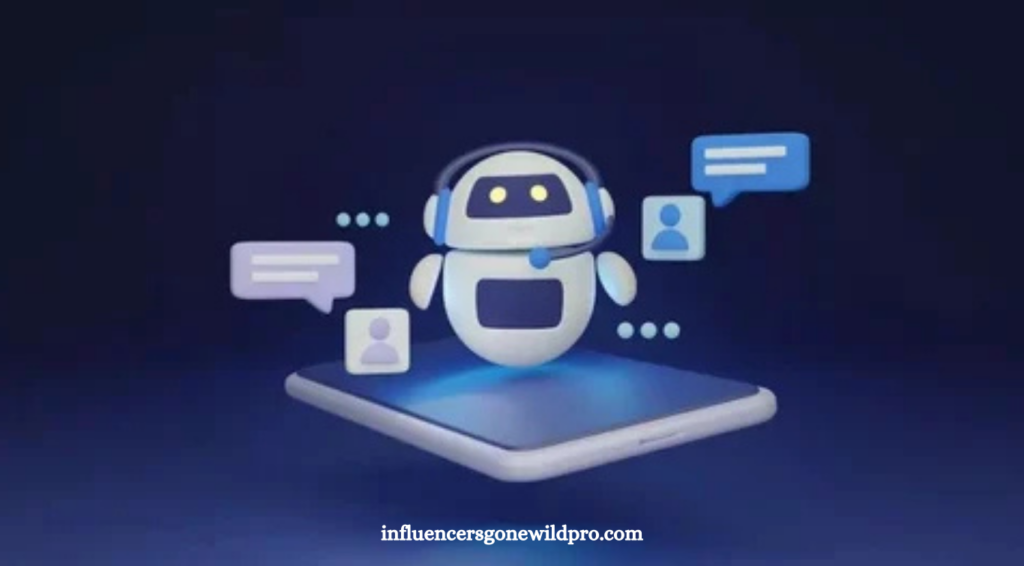Have you encountered a modern application that lacks AI-powered features? Unlikely. Artificial intelligence has become a cornerstone of delivering exceptional digital experiences, shaping the way businesses interact with their customers. As AI continues to transform web development, its integration into the testing process is equally essential.
However, with the growing reliance on AI for software development and testing, concerns around data privacy and regulatory compliance have become more prevalent. Organizations must ensure their applications remain accessible, even as they implement dynamic, AI-driven features—a challenge that requires a strategic approach.
If you’re struggling to integrate accessibility testing with AI-powered tools, you’re not alone. This article explores the significance of AI in accessibility testing, its key capabilities in addressing accessibility concerns, and best practices for incorporating AI-driven testing into your software development workflow.
Why Accessibility Testing Matters
Before diving into the process of verifying software accessibility with AI-powered testing tools, it’s crucial to understand why investing time and resources in accessibility testing is essential. Here are some key reasons that justify its importance:
- Ensuring Equal Access for All Users
Digital platforms should cater to every user with equal functionality and respect. Individuals relying on screen readers or keyboard navigation must have the same level of access as those using a standard mouse. Without thorough accessibility testing, achieving this level of inclusivity is impossible. - Compliance with Legal and Regulatory Standards
Many countries enforce strict web accessibility regulations. For example, in the United States, the Americans with Disabilities Act (ADA) and Section 508 of the Rehabilitation Act mandate that both public and private websites adhere to accessibility standards. Failure to comply can result in lawsuits, financial penalties, and reputational damage. - Demonstrating Ethical Responsibility
Accessibility is not just a legal requirement—it’s a commitment to inclusivity and fairness. Investing in accessibility validation reflects an organization’s dedication to social responsibility, reinforcing a positive brand reputation and fostering trust among users.
By prioritizing accessibility testing, businesses not only enhance user experience but also align with ethical and legal standards, ensuring a more inclusive digital landscape for all.
Key Capabilities of AI-Powered Accessibility Tools
With a wide range of accessibility testing tools available in the market, you might wonder why investing in AI-powered solutions is necessary. The answer lies in the advanced capabilities that only AI-driven tools can offer. Here’s what sets them apart:
1. Automated Detection of Common Accessibility Issues
AI-powered accessibility tools build upon the foundations of traditional accessibility checkers, scanning for missing alt attributes, invalid HTML tags, and insufficient color contrast. However, AI takes this a step further by continuously learning from past errors and real-world data.
By analyzing thousands of web pages and refining prediction algorithms, AI-driven tools not only enhance detection accuracy but also minimize false positives. This dynamic learning process ensures broader coverage, enabling a more effective and efficient accessibility validation process.
Incorporating AI into accessibility testing enhances accuracy, reduces manual effort, and ensures compliance with evolving accessibility standards—making it a valuable investment for any digital platform.
2. Image Recognition and Alt Text Generation
AI-powered accessibility tools leverage advanced computer vision models to interpret images and automatically generate alt text. This capability is particularly beneficial for eCommerce platforms with extensive product catalogs and news websites that frequently update visual content.
While human review is still necessary to ensure accuracy, AI significantly reduces the time and effort required to identify and describe images. By automating this process, businesses can enhance accessibility more efficiently, ensuring that visually impaired users receive meaningful context without excessive manual labor.
3. NLP for Content Clarity
Natural Language Processing (NLP) plays a crucial role in enhancing the clarity and effectiveness of web content. AI-powered NLP engines can analyze link text, headings, and labels to ensure they accurately convey context and purpose.
For instance, a generic phrase like “Read More” lacks clarity, whereas “Read More About Our Sustainability Efforts” provides meaningful guidance. By leveraging AI-driven NLP, organizations can refine their content, making it more accessible and user-friendly while maintaining consistency across their digital platforms.
4. Context-Aware Recommendations
AI-powered accessibility tools go beyond merely identifying issues—they provide intelligent, context-aware recommendations for effective resolution. For instance, if a website has color contrast issues that impact readability, an AI tool can suggest alternative color palettes that enhance accessibility while maintaining brand consistency.
By offering tailored solutions rather than generic fixes, AI helps organizations optimize their digital experiences without compromising design aesthetics, ensuring accessibility improvements align seamlessly with their brand identity.
5. Live Monitoring and Alerts
AI-powered accessibility tools provide continuous monitoring to track changes in website content and structure. When new accessibility issues arise, these systems send real-time alerts, enabling immediate remediation.
This proactive approach is particularly valuable in agile development environments, where early detection and resolution of issues prevent them from escalating into larger concerns. By integrating live monitoring, organizations can maintain compliance, enhance user experience, and ensure that accessibility remains a priority throughout the development lifecycle.
Popular AI-Powered Accessibility Tools
To better understand the impact of AI in accessibility validation, let’s explore some of the most widely used AI-powered tools. From the vast range of available options, we have selected the most popular solutions that cater to diverse accessibility needs.
1. Microsoft Accessibility Insights
Microsoft Accessibility Insights is an AI-driven accessibility testing tool designed to provide automated checks alongside guided manual assessments. It helps evaluate the accessibility maturity of an application’s user interface, ensuring compliance with industry standards.
This tool functions as a browser extension, making it versatile for testing single-page applications, static websites, and even native Windows or Android applications. With its capability to assess both desktop and mobile platforms, Microsoft Accessibility Insights is a comprehensive solution for organizations looking to enhance digital inclusivity.
2. Axe DevTools
Deque’s Axe DevTools is one of the most widely recognized accessibility testing tools, powered by the Axe engine—a trusted standard in the accessibility community. While its foundational tool relies on rule-based scanning, the latest versions incorporate machine learning to minimize false positives and detect more complex accessibility issues.
Axe DevTools seamlessly integrates into the development pipeline, enabling accessibility testing across multiple platforms, including both web and mobile applications. By embedding accessibility checks early in the development process, teams can ensure compliance while streamlining workflows.
3. Google Lighthouse
While Google Lighthouse is not fully AI-based, it continuously evolves with machine learning techniques that enhance its auditing capabilities. This tool offers a comprehensive suite of tests, including accessibility, performance, SEO, and best practices, making it a valuable asset for developers.
Lighthouse can be easily integrated into automation workflows, enabling consistent and scalable accessibility testing. With recent updates hinting at AI-driven pattern analysis, future versions are expected to provide even deeper accessibility insights, further improving web inclusivity and compliance.
4. Siteimprove
Siteimprove is an AI-powered accessibility tool designed to perform comprehensive website scans, identifying issues related to broken links, SEO concerns, and accessibility violations.
Leveraging AI-driven analytics, Siteimprove helps organizations prioritize critical accessibility issues, ensuring that their digital platforms remain inclusive and compliant with accessibility standards. By offering actionable insights, this tool enables teams to proactively enhance user experience while maintaining website integrity.
5. LambdaTest
LambdaTest is a cutting-edge, AI-powered test orchestration and execution platform designed for scalable manual and automated testing. It enables testing across 3,000+ real devices, browsers, and OS combinations, ensuring comprehensive compatibility validation.
Beyond standard real device testing, LambdaTest supports advanced processes like automated cross-browser testing and AI-driven quality assurance (QA) testing. After executing test scenarios, the platform generates detailed test reports enriched with screenshots, videos, and logs, helping teams quickly identify issues and implement effective resolutions.
6. UserWay AI-Powered Accessibility Solutions
UserWay AI is an advanced accessibility solution that automatically scans and remediates common accessibility issues, including alt text generation and color contrast adjustments.
Primarily available as an overlay widget, UserWay provides immediate frontend fixes, enhancing accessibility without modifying the core code. Additionally, its deep scanning capabilities detect structural accessibility issues that require direct intervention within the application’s source code, ensuring long-term compliance and improved user experience.
Best Practices for Integrating AI Tools into Development Workflows
AI-powered accessibility tools can enhance software quality, but they must be integrated strategically. Below are key best practices to ensure seamless adoption and maximize their effectiveness in the software development lifecycle.
1. Adopt a Shift-Left Approach
The shift-left approach means integrating accessibility testing early in the development process rather than waiting until the final stages.
Why It’s Important:
- Identifies issues before they become deeply embedded in the code.
- Saves time and effort by preventing costly rework.
- Reduces the risk of compliance failures.
How to Implement It:
- Run AI-powered accessibility tests during the coding and design phases.
- Ensure developers check for elements like alt text, color contrast, and keyboard navigation from the beginning.
- Integrate automated accessibility testing into early-stage testing cycles.
2. Balance AI with Human Testing
While AI can automate many accessibility checks, human testers are still essential to catching context-specific issues.
Why It’s Important:
- AI tools may miss design problems that impact real users, such as misleading navigation or poor text readability.
- AI cannot fully understand intent; for example, an image may have alt text, but it may still be unclear or unhelpful.
- Manual testing ensures a real-world perspective on accessibility.
How to Implement It:
- Use AI for large-scale automated scanning, supplemented by manual user testing.
- Conduct usability testing with individuals who have disabilities to gather real feedback.
- Train human testers to evaluate AI-generated reports and prioritize fixes effectively.
3. Integrate AI Testing into CI/CD Pipelines
Embedding accessibility tests into Continuous Integration (CI) and Continuous Deployment (CD) pipelines ensures that every code change maintains accessibility standards.
Why It’s Important:
- Prevents accessibility regressions by catching issues before deployment.
- Improves developer efficiency by integrating accessibility checks into routine workflows.
- Enables faster issue resolution, reducing costs associated with post-release fixes.
How to Implement It:
- Use AI tools like Axe DevTools, Google Lighthouse, or Siteimprove to automate accessibility scans after every code commit.
- Set up alerts for accessibility violations so developers can address issues immediately.
- Ensure test reports are generated automatically and reviewed by QA teams.
4. Customize AI Tools for Business Needs
Many AI-powered testing platforms allow organizations to define their own accessibility rules to align with branding and compliance requirements.
Why It’s Important:
- Ensures AI tools align with company branding while maintaining accessibility.
- Reduces false positives by focusing on relevant accessibility checks.
- Helps organizations meet industry-specific compliance standards, such as those for eCommerce, banking, or government websites.
How to Implement It:
- Configure AI tools to enforce company-specific accessibility guidelines.
- Use custom accessibility rules for colors, fonts, and layouts specific to the brand’s identity.
- Train teams on interpreting AI-generated reports and refining rules as needed.
5. Train Teams on AI and Accessibility Best Practices
AI tools can automate accessibility checks, but development teams must understand the fundamentals of inclusive design and how to act on AI-generated reports.
Why It’s Important:
- Ensures that developers, designers, and content creators can properly implement accessibility fixes.
- Reduces dependency on third-party audits by building internal accessibility expertise.
- Helps teams interpret AI-generated insights correctly, preventing misinterpretation of issues.
How to Implement It:
- Provide training on accessibility standards such as WCAG, ADA, and Section 508.
- Educate teams on how AI tools identify and prioritize accessibility issues.
- Encourage collaboration between developers, designers, and QA teams to maintain accessibility standards.
Frequently Asked Questions
What are AI-powered accessibility tools?
AI-powered accessibility tools use artificial intelligence to analyze websites and applications for compliance with accessibility standards like WCAG, ADA, and Section 508. These tools help detect and fix issues such as poor color contrast, missing alt text, and incorrect heading structures.
How do AI accessibility tools work?
These tools scan web pages or applications using machine learning and rule-based algorithms. They identify potential accessibility violations and suggest improvements, often integrating with development workflows for continuous monitoring and automated fixes.
Can AI replace manual accessibility testing?
No, AI can enhance but not completely replace manual accessibility testing. While AI tools automate checks for common issues, they cannot fully evaluate user experience, context, or intent. Human testers are essential for usability testing and ensuring real-world accessibility.
What is the shift-left approach in AI accessibility testing?
The shift-left approach involves integrating accessibility testing early in the development cycle rather than waiting until the final stages. This method helps identify and fix issues before they become costly to correct.
How do AI accessibility tools fit into CI/CD pipelines?
Many AI tools integrate with Continuous Integration/Continuous Deployment (CI/CD) pipelines to automatically run accessibility tests whenever new code is deployed. This ensures that accessibility is maintained throughout the software development lifecycle.
Can AI tools customize accessibility testing for my organization?
Yes, most AI accessibility tools allow customization to align with your brand’s design patterns, industry regulations, and internal accessibility guidelines. This reduces false positives and ensures relevant testing.
Do AI accessibility tools improve user experience?
Yes, AI-driven accessibility improvements lead to a more inclusive and user-friendly digital experience. They help ensure that all users, including those with disabilities, can navigate and interact with a website or application smoothly.
Should developers and designers be trained on AI accessibility tools?
Absolutely. While AI tools automate accessibility checks, developers and designers need to understand accessibility fundamentals to properly interpret reports and implement necessary fixes effectively.
Conclusion
AI-powered accessibility tools have transformed the way organizations ensure digital inclusivity. By leveraging artificial intelligence, these tools automate the detection of accessibility issues, provide real-time suggestions, and seamlessly integrate into development workflows. While AI enhances efficiency, it does not eliminate the need for manual testing, as human judgment is still essential for assessing usability and context-specific challenges.
To maximize the benefits of AI in accessibility testing, organizations should adopt best practices such as the shift-left approach, integrating AI tools into CI/CD pipelines, and providing teams with proper training on accessibility fundamentals. By doing so, businesses can create a more inclusive digital environment, improve compliance with accessibility standards, and enhance user experience for all individuals, including those with disabilities.


